Designing a kitchen in a studio apartment requires careful consideration of space, functionality, and aesthetics. One of the key decisions is choosing the right flooring – a crucial element that not only impacts the visual appeal but also contributes to the overall practicality of the space. In this guide, we’ll explore simple tips to help you make an informed decision when selecting a coating for your studio kitchen.
Contents
- Prioritize Durability
- Consider Easy Maintenance
- Evaluate Moisture Resistance
- Reflect Your Style
- Mind the Visual Space
- Assess Budget Constraints
- Think About Comfort
- Explore Eco-Friendly Options
- Occupant Needs and Lifestyle
- Slip Resistance and Safety
- Noise Reduction and Sound Insulation
- Installation Process
- Subfloor Preparation
- Acclimatization of Materials
- Maintenance Tips
- Conclusion
Prioritize Durability
In a studio kitchen, where both cooking and living spaces coexist, durability is paramount. Opt for flooring materials known for their resilience against heavy foot traffic, spills, and frequent use. Materials like ceramic tiles, vinyl, and laminate are excellent choices, offering both durability and ease of maintenance.
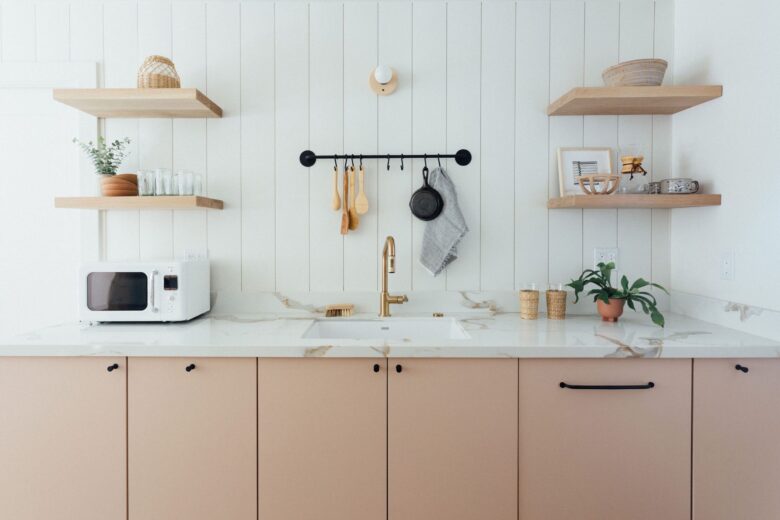
Source: mydomaine.com
Consider Easy Maintenance
A studio kitchen demands flooring that is easy to clean and maintain. Since the kitchen is a high-traffic area prone to spills and stains, choosing a coating that can be effortlessly wiped or mopped is essential. Porcelain tiles and vinyl, for example, are known for their stain-resistant properties, making cleanup a breeze. If this is what you’re looking for please check out https://radixflooring.com/product-category/laminate/.
Evaluate Moisture Resistance
Given the nature of cooking activities, moisture resistance is crucial in a kitchen. Avoid materials that are susceptible to water damage or warping. Ceramic tiles, luxury vinyl planks, and linoleum are options that resist moisture, ensuring the longevity of your studio kitchen flooring even in the face of inevitable spills.
Reflect Your Style
While functionality is vital, don’t compromise on style. Your studio kitchen’s flooring should complement the overall aesthetic of the space. Consider materials that come in a variety of colors and patterns to match your design preferences. Engineered wood, ceramic tiles with intricate designs, or patterned vinyl can add a touch of style to your studio kitchen.
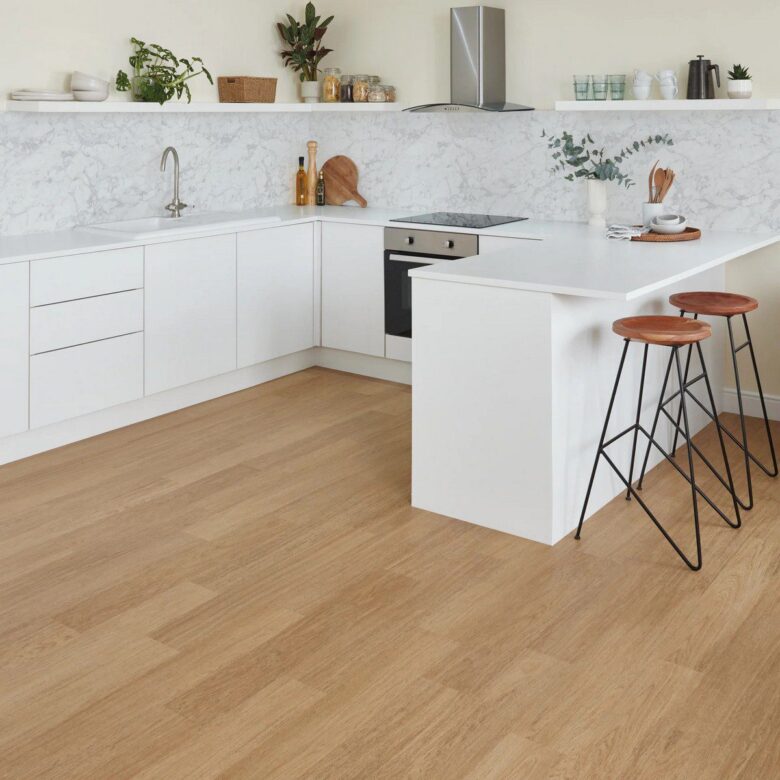
Source: tekaflooring.co.uk
Mind the Visual Space
In a studio apartment where space is limited, visual continuity is key. Choose flooring that creates a seamless flow between the kitchen and the rest of the living area. Light-colored flooring can make the space feel more open and airy, while darker tones add a cozy and intimate feel. Consider materials that contribute to the illusion of a larger, well-integrated space.
Assess Budget Constraints
Your budget is a crucial factor in the decision-making process. Fortunately, there are various flooring options that cater to different budgets. Laminate and vinyl, for instance, provide cost-effective solutions without compromising on style and durability. Evaluate your financial constraints and explore flooring options that align with your budgetary considerations.
Think About Comfort
Considering the amount of time spent standing in the kitchen, especially in a studio where the kitchen often serves as a multi-functional space, the comfort of the flooring is essential. Materials like cork or rubber provide a softer surface underfoot, making them comfortable choices for extended periods of cooking or socializing.
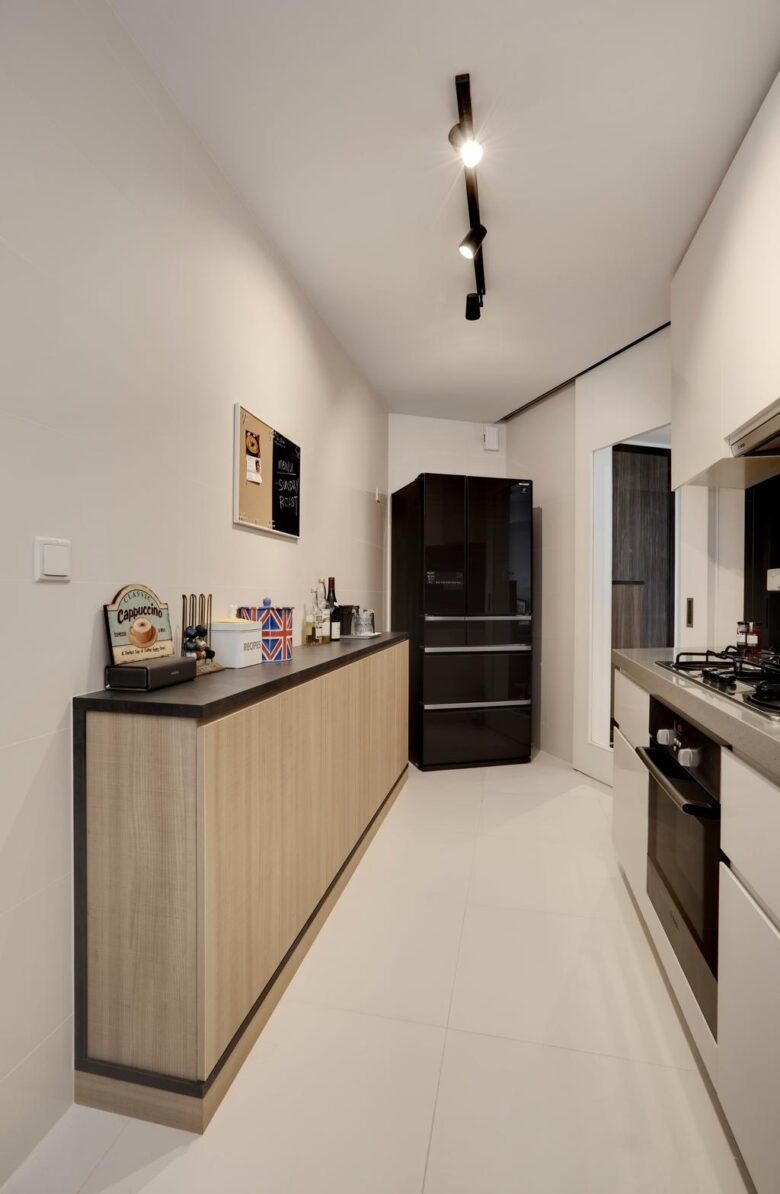
Source: qanvast.com
Explore Eco-Friendly Options
For those with a focus on sustainability, explore eco-friendly flooring options. Bamboo, cork, and linoleum are renewable and biodegradable materials that offer an environmentally conscious choice for your studio kitchen. Look for certifications and labels that indicate the eco-friendly nature of the flooring.
Occupant Needs and Lifestyle
When selecting studio kitchen flooring, it’s crucial to consider the specific needs and lifestyle of the occupants. For individuals with mobility issues or households with children, the flooring must not only be durable but also safe. Factors such as ease of cleaning, resistance to spills and stains, and comfort underfoot should be prioritized. For example, soft vinyl or cushioned linoleum can be preferable for families with young children, offering a softer landing in case of falls, whereas slip-resistant tiles may be more suitable for those with mobility concerns, ensuring a safer environment for all users.
Slip Resistance and Safety
Choosing flooring materials that offer slip resistance and safety features is paramount, especially in a kitchen, which is prone to spills and wetness. Kitchens in studio apartments, often part of a larger living space, see a lot of foot traffic, making the risk of slips and falls higher. Materials like textured vinyl, matte-finished tiles, or slip-resistant laminate can significantly reduce this risk. Additionally, opting for flooring with inherent anti-slip properties or treatments can enhance safety without sacrificing style.
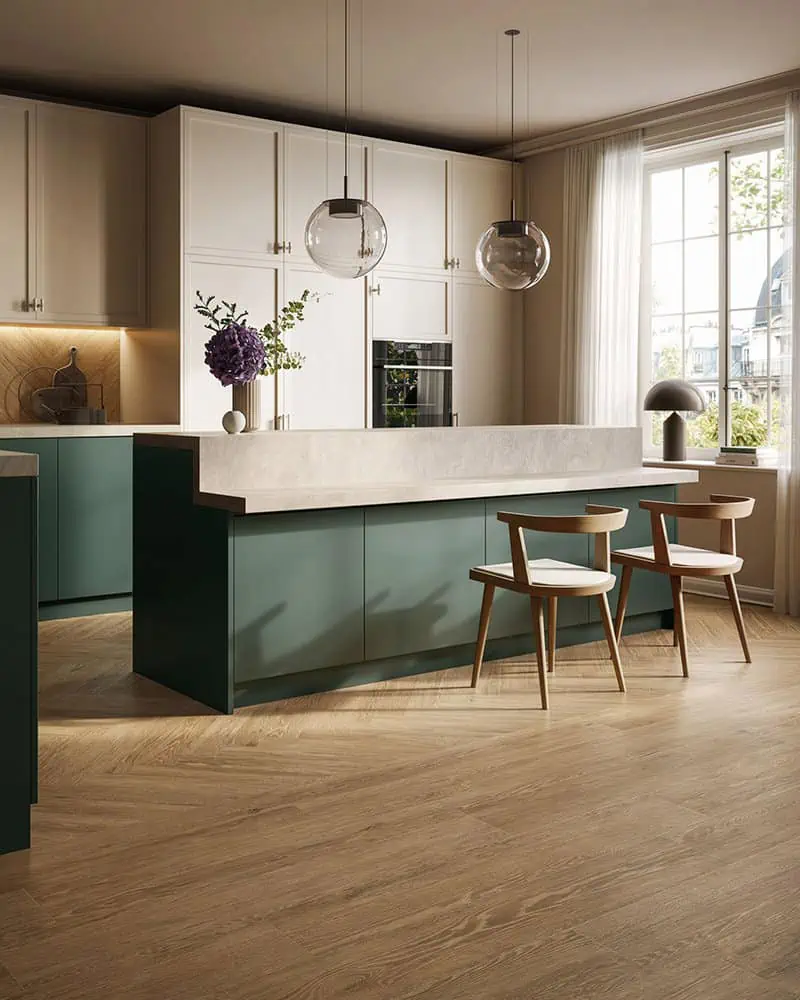
Source: porcellanatilestudio.com
Noise Reduction and Sound Insulation
In a studio apartment, where living spaces are combined, selecting flooring options that help dampen sound is essential for enhancing comfort and privacy. Hard surfaces can amplify noise, making activities in the kitchen area intrusive to the rest of the living space. Flooring materials like cork or thick vinyl planks can offer better sound insulation, absorbing noise rather than reflecting it. Carpets and rugs are not typically suitable for kitchens but consider adding them in adjacent areas to further reduce noise transmission.
Installation Process
Understanding the installation process is crucial for those planning a DIY project or hiring professionals. Each flooring type comes with its specific installation requirements. For example, tile flooring might require mortar and grouting, while laminate planks often use a click-lock system that can be more DIY-friendly. It’s important to review all manufacturer instructions and, if necessary, consult with a professional to avoid common pitfalls like uneven laying or improper sealing, which can affect the flooring’s durability and appearance.
Subfloor Preparation
Proper subfloor preparation is vital before installing new flooring to ensure its longevity and stability. This process may involve cleaning, leveling, or repairing the existing subfloor. Uneven surfaces can lead to cracks, creaks, or even structural damage to the new flooring. For moisture-prone areas like kitchens, ensuring the subfloor is dry and free from mold or rot is crucial. Investing time in subfloor preparation can prevent costly repairs and extend the life of your new kitchen flooring.
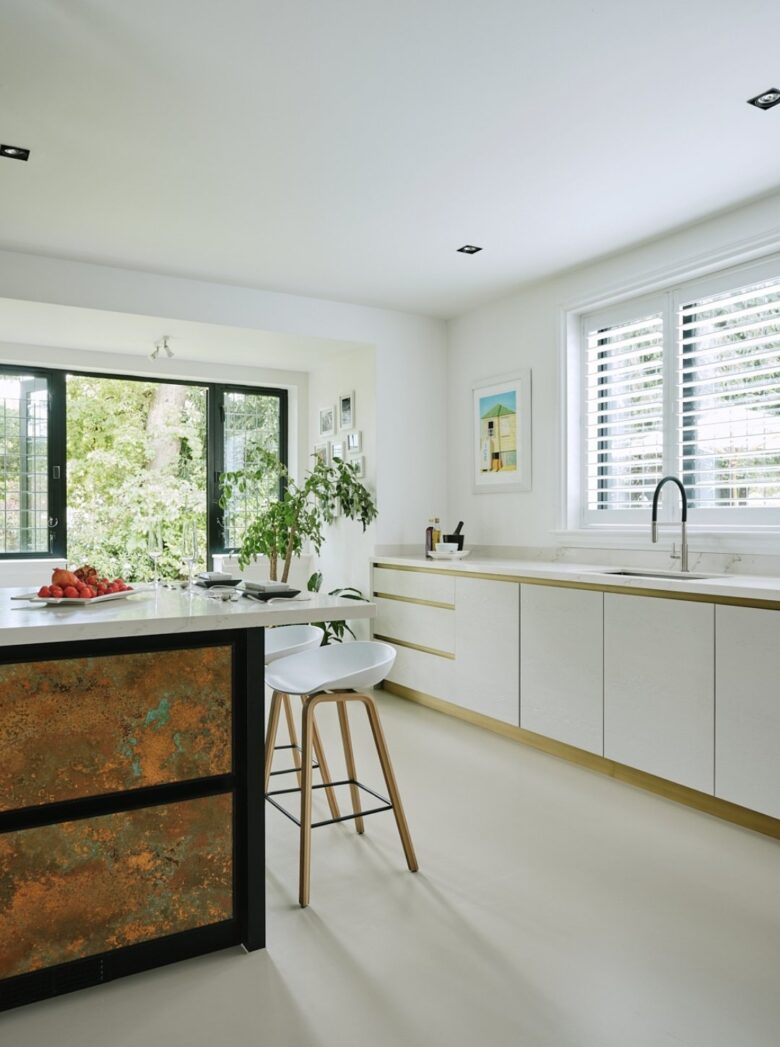
Source: sbid.org
Acclimatization of Materials
Flooring materials need to be acclimatized to the studio environment before installation to prevent future issues such as warping, buckling, or gaps. This process involves storing the new flooring in the room where it will be installed for a certain period, allowing it to adjust to the room’s temperature and humidity levels. Failure to acclimatize, especially for wood or laminate options, can lead to significant post-installation problems that affect both the appearance and integrity of the flooring.
Maintenance Tips
To prolong the lifespan of studio kitchen flooring and keep it looking its best, regular maintenance is necessary. For most flooring types, daily sweeping and prompt spill cleanup can prevent damage. Use manufacturer-recommended cleaning products to avoid discoloration or chemical damage. For wood and laminate floors, minimizing moisture exposure is key to preventing warping. Additionally, placing protective pads under furniture can prevent scratches and dents, keeping the flooring in pristine condition for years to come.
Conclusion
Choosing the right coating for a studio kitchen involves a thoughtful blend of practical considerations and design aesthetics. By prioritizing durability, ease of maintenance, moisture resistance, and style, you can create a functional and visually appealing kitchen space. Reflecting on your budget, considering the visual space, and exploring eco-friendly options will ensure that the chosen flooring not only meets your immediate needs but also contributes to the overall charm of your studio apartment.
